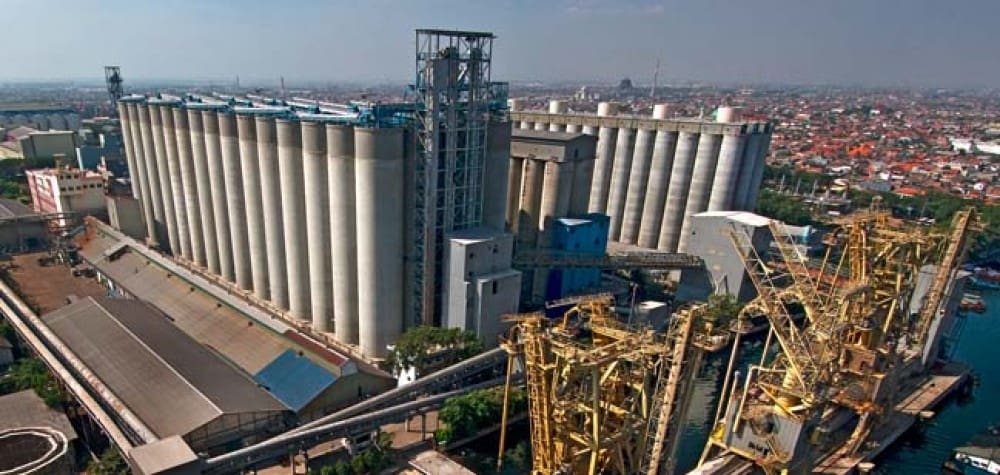
The Bogasari flour mill in Jakarta is the world’s biggest, and the volume customer for Australia’s biggest wheat market.
THE future of Australia’s largest wheat market depends on Australia being able to hold on to its share of the noodle market, effectively target the premium-baking sector, and get Australian grain into the growing feed market.
That was the message to the Australian grains industry from AEGIC CEO Richard Simonaitis in his keynote presentation to the 2019 GRDC Research Updates in Perth this week.
Entitled Technical support for the Indonesian wheat industry — our single biggest wheat customer, his address gave an overview of the current status of the Indonesian market, what the future holds, and what AEGIC is doing in response.
Mr Simonaitis said Indonesia was overall a positive market for Australia.
“Population is growing rapidly, which means more mouths to feed and a larger overall market in Australia’s well-established noodle sector,” he said.
“AEGIC’s analysis has shown that by 2030, Indonesia’s population will jump by another 30 million.
“People are becoming wealthier, with per capita GDP jumping from US$780 in 2000 to more than $3800 in 2017, and the middle class exploding from 2 million people in 2004 to 120M people by 2020.
“People are becoming more urbanised and buying more baked goods and other wheat-based convenience foods – good news for Australian efforts to break into the premium-bread sector.
“The animal-feed market is growing rapidly, which represents another significant opportunity for Australia.”
Mr Simonaitis said everyone had a part to play to support the Indonesian market and increase value for Australian grain growers.
“Ultimately, Australia needs to keep growing wheat varieties that Indonesia wants to buy, and we need to build their skills and capacity to empower them to get the most out of our product.
“This requires a whole-of-industry approach.”
Mr Simonaitis said AEGIC’s market intelligence on Southeast Asian wheat quality requirements had provided the industry with a solid grounding on which to position for market growth.
“AEGIC is helping Indonesia through in-market engagement and support, especially in the premium-baking sector, through our Australian Wheat for Asian Baking project.
“If Australia can capture 10 per cent of the baking market, it would be worth $72M for the Australian industry.
Mr Simonaitis said Australian wheat was already well-regarded for noodles, and AEGIC’s market intelligence was helping the industry keep ahead of the competition by focusing on quality enhancements .
“We engage expert feed-nutrition consultants to go out into the market and communicate the benefits of incorporating Australian grain into feed formulations.”
Mr Simonaitis said Indonesia represented significant long-term value for Australian grain growers.
According to a recent article in the US World Grain magazine, Indonesia has a grain-equivalent production capacity of 11.8Mt of flour, but actual flour production in 2018 was expected to be around 6.4Mt.
The largest is P.T. Bogasari Flour Mills’ Jakarta facility, which Indonesia, which is undergoing expansion to take the yearly production capacity from its 15 milling lines to more than 4Mt.
The World Grain article said Bogasari’s mills typically import wheat from Australia as its primary supplier, as well as the US and Canada, but the recent drought in Australia had forced Bogasari to also bring in wheat from the Black Sea region.
Indonesian market facts:
- Indonesia’s population will jump 30 million by 2030 to 295m;
- Indonesia’s middle class is growing from 2M in 2004 to 120M in 2020;
- Urbanisation: an additional 67M people will live in Indonesian cities by 2030;
- Wheat consumption per person increased from 7 kilograms in 1985 to 22kg in 2016;
- Total wheat imports to Indonesia have increased from 4Mt in 2000 to more than 11.5Mt in 2017;
- Indonesia is by far Australia’s biggest wheat market: 4.2Mt worth $1.2 billion each year (average).
Source: AEGIC, World Grain



HAVE YOUR SAY